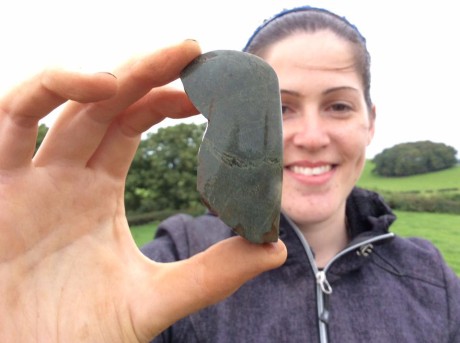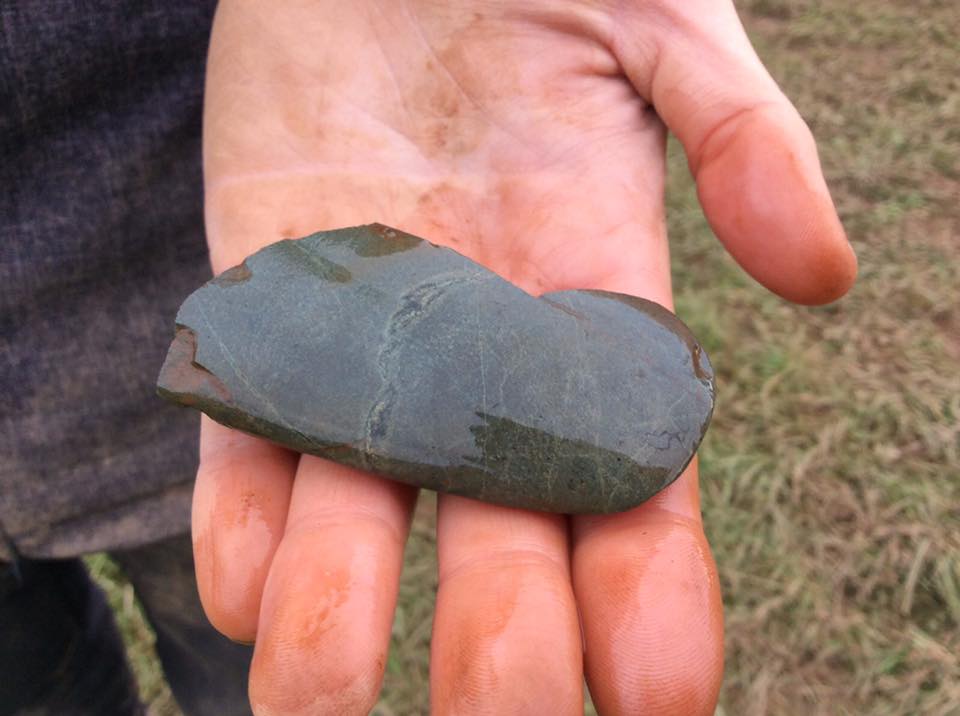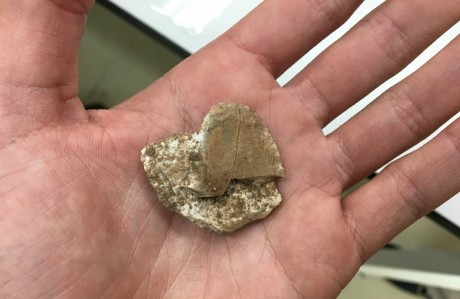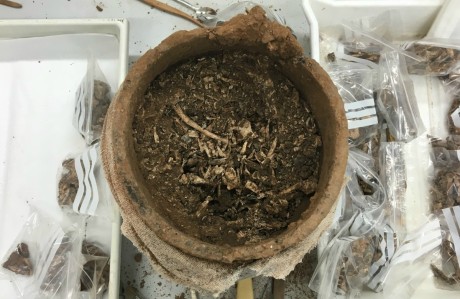
So this is it. THIS is the discovery that made our hearts skip a beat.
It’s a beautiful Neolithic polished stone axe. Specifically, it’s a Langdale axe – a type of axe produced in England’s Lake District and distributed all over the country on a near industrial scale between 4,000 and 6,000 years ago.
It’s made from Langdale tuff, which became one of the most common materials for axe-making at the time. But the fact that it was the most common does NOT make it ordinary.
Born of volcanic ash, petrographic analysis shows that the tuff used for these axes comes from a narrow range of outcrops along the likes of Scaffell Pike and Harrison Stickle. In other words, our axe is made from compressed volcano dust harvested from some of the highest peaks in England!

If it sounds like the stuff of legend, then bear in mind that Neolithic people could probably have got similar tuff from easier to reach locations. Perhaps its source mattered, and the people who acquired the axes really did want what was hardest to get.
In a way, it’s easy to see why. That same wow-factor still resonates today.
The artefact was discovered when Allison noticed a sudden flash of aquamarine under her trowel. As the object got passed around, we were all immediately smitten, not only by how it looked (so blue, so shiny!), how it felt (so smooth!), and by how much of a tangible connection it provided to the person who last held it 4,000 years ago, but also by the impressive story of its origin.
But it’s not just how immediate the discovery feels, it’s what it adds to the story of the mighty Bronze Age burial mound we’ve been investigating up here in Lancashire.
So far, most of our major finds (like the urn), relate to the early Bronze Age, but the fact that Allison found the axe broken and buried in a fire pit absolutely smacks of Neolithic behaviour.
The axe itself is not complete; it bears the wounds of having been hit on the side with another sharp object and appears to have been broken, perhaps intentionally. All we’re left with is the very end. So who smashed it? Why? When? And what happened to the rest of it?
If this axe and the fire pit it was buried in really is the result of late Neolithic activity, then it pushes the story of our burial mound even further back into the past. And that makes this little axe a pretty gigantic discovery.


